Politics
Ukraine outnumbered, outgunned, ground down by relentless Russia

As the Ukraine war enters its third year, the infantry of 59th Brigade are confronting a bleak reality: they’re running out of soldiers and ammunition to resist their Russian invaders.
One platoon commander who goes by his call sign “Tygr” estimated that just 60-70% of the several thousand men in the brigade at the start of the conflict were still serving. The rest had been killed, wounded or signed off for reasons such as old age or illness.
Heavy casualties at the hands of Russian forces have been compounded by dreadful conditions on the eastern front, with frozen soil turning into thick mud in unseasonably warm temperatures, playing havoc with soldier’s health.
“The weather is rain, snow, rain, snow. People get ill with simple flu or angina as a result. They’re out of action for some time, and there is nobody to replace them,” said a company commander in the brigade with the call sign “Limuzyn”. “The most immediate problem in every unit is lack of people.”
On the cusp of the second anniversary of its Feb. 24 invasion, Vladimir Putin’s Russia is in the ascendancy in a conflict that combines attritional trench combat reminiscent of World War One with high-tech drone warfare that’s sending tens of thousands of machines into the skies above.
Moscow has made small gains in recent months and claimed a major victory at the weekend when it took control of Avdiivka in the hotly contested eastern Donetsk region. A spokesperson for 3rd Separate Assault Brigade, one of the units that tried to hold the town, said the defenders were outnumbered seven to one.
Reuters spoke to more than 20 soldiers and commanders in infantry, drone and artillery units on different sections of the 1,000-km frontlines in eastern and southern Ukraine.
While still motivated to fight Russian occupation, they spoke of the challenges of holding off a larger and better supplied enemy as military support from the West slows despite pleas for more from Ukrainian President Volodymyr Zelenskiy.
Another commander in the 59th Brigade, who only gave his first name Hryhoriy, described relentless attacks from groups of five to seven Russian soldiers who would push forward up to 10 times a day in what he called “meat assaults” – highly costly to the Russians but also a major threat to his troops.
“When one or two defensive positions are fighting off these assaults all day, the guys get tired,” Hryhoriy said as he and his exhausted men were afforded a brief rotation away from the frontlines near the Russian-occupied eastern city of Donetsk.
“Weapons break, and if there is no possibility of bringing them more ammunition or changing their weapons, then you understand what this leads to.”
The Ukrainian and Russian defence ministries didn’t immediately respond to requests for comment on the state of the play on the frontlines and how both sides intend to prosecute the war through to the end of the year.
WANTED: FIGHTERS AND AMMO
Kyiv relies heavily on money and equipment from abroad to fund its war effort, but with $61 billion in U.S. aid held up by political bickering in Washington it is looking more exposed than at any time since the start of the invasion.
A soldier serving in a GRAD rocket artillery unit, whose call sign is “Skorpion”, said that his launcher, which uses Soviet-designed ammunition held by few of Ukraine’s allies, was now operating at about 30% of maximum capacity.
“It became like this recently,” he said. “There aren’t as many foreign munitions.”
Artillery shells are also in short supply as a result of Western countries’ inability to keep up the pace of shipments for a drawn-out war. On top of the U.S. supply pause, the EU has conceded it will miss its target to supply a million shells to Ukraine by March by nearly half.
Michael Kofman, a senior fellow and Russian military specialist at the Carnegie Endowment for International Peace, a Washington-based think-tank, estimated that Russia’s artillery was firing at five times the rate of Ukraine’s, a figure that Hryhoriy of the 59th Brigade also gave.
“Ukraine is not getting a sufficient amount of artillery ammunition to meet its minimum defensive needs, and this is not a sustainable situation moving forward,” Kofman added.
Moscow now controls almost a fifth of Ukrainian territory including the Crimea peninsula it annexed in 2014, even if the frontlines of the war have largely stagnated in the last 14 months.
Ukrainian officials have said their armed forces number around 800,000, while in December Putin ordered Russia’s forces to be increased by 170,000 troops to 1.3 million.
Beyond personnel, Moscow’s defence spending dwarfs that of Ukraine. In 2024 it earmarked $109 billion for the sector, more than twice Ukraine’s equivalent target of $43.8 billion.
A new law aimed at mobilising 450-500,000 more Ukrainians is slowly making its way through parliament, but for some soldiers fighting now, significant reinforcements seem a distant hope.
Ukrainian Defence Minister Rustem Umerov recently referred to Ukraine’s artillery ammunition deficit as “critical” in a letter to the European Union, urging its national leaders to do more to bolster supplies.
His letter said Ukraine’s “absolute critical daily minimum requirement” was 6,000 artillery shells, but his forces were able to fire just 2,000 a day, the Financial Times reported.
DRONE WAR ON MASSIVE SCALE
Conventional warplanes are a relatively rare sight over the frontlines, largely because air defences act as a deterrent. Yet a different battle is raging in the skies, with both sides striving for the upper hand in drone technology.
Drones – or unmanned aerial vehicles (UAVs) – are cheap to produce and can surveil enemy movements and drop ordinance with pinpoint accuracy.
Kyiv has overseen a boom in drone production and innovation and is developing advanced, long-range UAVs, while Moscow has more than matched its rival with huge investments of its own, allowed it to nullify Ukraine’s early advantage.
The scale is astonishing.
On the Ukrainian side alone, more than 300,000 drones were ordered from producers last year and more than 100,000 sent to the front, digital minister Mykhailo Fedorov told Reuters.
A strong focus now is on light, nimble FPV drones, where operators, or pilots, get a first-person view from an onboard camera. President Zelenskiy has set a target for Ukraine to produce one million FPV drones this year in light of the battlefield advantages delivered by the technology.
Limuzyn, the company commander in the 59th Brigade, said Russia’s widespread use of drones had make it difficult for Ukrainian troops to establish or strengthen fortified positions.
“Our guys start to do something, a drone sees them, and a second drone arrives to drop something onto them.”
Drones have also forced the Russians to move valuable vehicles and weapons systems back by several kilometres, according to two Ukrainian drone pilots in different units.
“It’s now very hard to find vehicles to hit… most vehicles are 9-10 km away or more,” said a pilot in the 24th Brigade with the call sign “Nato”. “At the beginning they were very comfortable being 7 km away.”
Two other Ukrainian drone pilots, “Leleka” and “Darwin”, both serving in the elite Achilles drone unit of the 92nd Brigade, described queues of two or three UAVs sometimes forming above the battlefield, waiting to hit enemy targets.
Leleka recalled watching four drones from different Ukrainian units coming in to strike a target on one occasion: “It’s like taxis at the airport, one drone comes, then another, then a third.”
The same situation is true for the Russians, whose drones now comfortably outnumber Ukraine’s, according to Ukrainian pilots from three units. The Russian defence ministry said this month that the country had ramped up its production of military drones in the past year, without giving figures.
As the use from drones grows, both sides are bolstering deployment of electronic warfare systems which can disrupt the frequencies that feed commands from the pilot to the drone, making them drop out of the sky or miss their target.
Darwin, a 20-year-old who dropped out of medical school to enlist when Russia invaded, compared the current drone arms race to that between aviation and air defence: planes dominated in World War Two, but modern air defence systems greatly limited their use in this war, he said.
“In future, I am sure there will be an analogous situation with drones: The concentration and effectiveness of electronic warfare will become so big that any connection between an aerial vehicle and its pilot will become impossible.”
© Reuters
Current Affairs
New survey points to coalition-led SA, but voter apathy a major factor

The results of an in-depth survey conducted by African Innovation Research SA (AIRSA) point to the country’s future being in the hands of coalitions and raise concerns about voter apathy, especially among the youth.
The initial sample comprised some 5 000 participants, of whom 46% confirmed they were either not interested in voting despite being registered or had not registered.
The majority of those surveyed by the independent research company based in Cape Town were in the 18–35 age group, a generation who are increasingly disillusioned with how the country is run.
The remaining 2 700 participants, who were interviewed from across a broad section of South Africa’s nine provinces, indicated that support for the ruling ANC is in decline, dipping below the 50% mark to 43% overall.
The ANC’s strongholds remain the Eastern Cape (61% of those surveyed), 58% in the Free State and 65% in Limpopo, where its challenger is the EFF at 23.7%.
In the country’s fourth-largest economy, Mpumalanga, the ANC leads with 52.3%, the EFF at 21.7% and the DA at 19.7%.
In the North West province, it’s a similar pattern, albeit reversed, with the ANC at 48.3%, the DA at 27.7% and the EFF at 20.0%, while in the Northern Cape, the ANC leads with 47.3%, followed by the DA with 24.3% and the EFF with 15.7%.
The country’s economic engine, Gauteng, is a key player in the power dynamics. Here, the ANC garnered 38.7%, but the EFF is growing its base to 19.3%, challenging the DA’s 20% of the province’s voters.
In the Western Cape, as expected, the DA holds onto a leading margin at 46.0%, with the ANC and EFF at 22.3% and 8.7% respectively. Gayton McKenzie’s Patriotic Alliance (PA) also features in the country’s southernmost province, making a notable showing at 5%.
While former president Jacob Zuma may have been barred from becoming a member of Parliament in the Constitutional Court this week, the new uMkhonto weSizwe Party (MKP) will play a pivotal role in KwaZulu-Natal. Results of the AIRSA survey show that while the ANC currently remains ahead with 28.7%, it’s an even race in the province with similar support for the IFP at 26.0% and MKP at 26.7%.
As experience dictates, the smaller parties will begin a series of bargaining tactics as to whose deck they end up in and call the shots.
At collectively accounting for around 20% of the upcoming vote, these potential coalition partners carry significant influence.
AIRSA also noted that voting in this sector is personality-driven as opposed to ideology.
The fragmentation of South Africa’s political landscape could also contribute to increasing dissatisfaction and disillusionment, particularly when linked to the country’s youth and increasing unemployment.
© IOL (Cape Times)
Politics
Zuma lashes out at judges after election ban
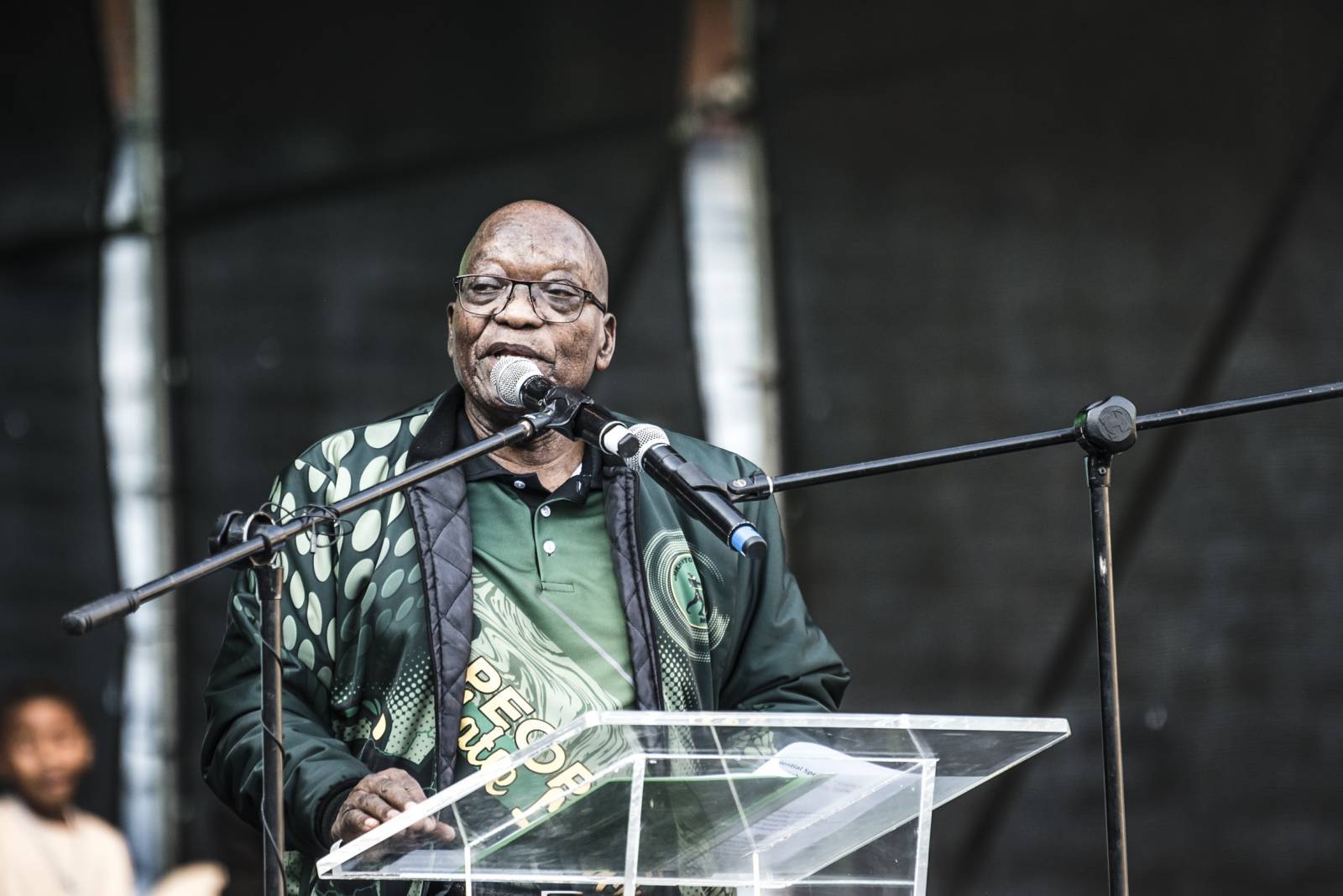
Former President Jacob Zuma has launched a scathing attack on some of the country’s top judges after he was barred from running for parliament on Monday.
In his first interview since the ban, Zuma told the BBC the Constitutional Court was wrong to decide he was unfit to run, based on his 2021 conviction for contempt of court.
“I expected that from our judges, but they are definitely wrong. Not correct,” the 82-year-old said, adding that the constitution should be changed.
Ahead of next week’s general election, Zuma had been campaigning under the banner of the newly formed uMkhonto weSizwe (MK) party.
He joined the party after falling out with the governing African National Congress (ANC), which he used to lead.
The electoral commission argued that the constitution bars anyone who was sentenced to more than 12 months in prison from serving as a lawmaker – a view backed by the Constitutional Court judges.
Zuma was convicted in 2021 for refusing to testify at an inquiry investigating corruption during his presidency.
His lawyers had insisted he was entitled to become an MP as his sentence was reduced to three months after current President Cyril Ramaphosa released him from prison in what was widely seen as an attempt to placate the former president’s angry supporters.
“The judges of the Constitutional Court have acted very funny to me – towards me in particular,” Zuma told the BBC.
“They are not taking into account the will of the people of this country, they use their own will.”
He was president from 2009 to 2018 before being forced out as leader of the ANC amid allegations of widespread corruption in his government.
The corruption, widely known as “State Capture”, saw hundreds of millions of rands of public assets taken into private hands. Zuma has always denied any direct role in corruption, but is due to face trial next year on allegations of bribery.
He told the BBC he had been wrongly stripped of his role as leader of the ANC.
“I don’t know what ‘State Capture’ means. If people say I am corrupt, what did I do? Do you have any facts about it? Am I guilty?
“I was removed before the end of my term, and nothing was produced as evidence that this was an issue.”
Zuma’s MK party had previously voiced its desire to change South Africa’s constitution, which was drawn up 30 years ago at the birth of the country’s democracy following decades of white-minority rule.
Asked about this in the light of his election ban, Zuma reiterated that the historic document needed to be changed.
“This constitution in the continent of Africa is guided by the laws from Europe, not us,” he said.
“There is nothing that has come right in this continent because we are still dominated by those who were the ones [who] slaved us, and after slavery, oppressed us, and after oppression, put their own laws to run us.
“There are details that clash with our lives.”
An Ipsos opinion poll released last month gave MK 8% of the vote, and the ANC 40% as it loses support to MK and other opposition parties.
But some analysts suggest that with the governing party stepping up its campaign in recent weeks, it could still cross the 50% mark. But if the ANC gets less than half of the vote, it would lose its majority for the first time in 30 years.
MK is expected to do especially well in Zuma’s home region of KwaZulu-Natal. Some opinion polls suggest it could emerge as the biggest party in KwaZulu-Natal, ending ANC dominance of the region.
After Zuma was jailed for contempt of court in 2021, angry supporters sparked days of deadly riots. More than 300 people were killed in the clashes.
On Wednesday Zuma said this violence demonstrated the scale of public support for him.
“This must tell you that the masses of this country loves Zuma – that’s why we had that,” he said.
When asked by the BBC if he would use this interview to call for peace and calm ahead of next week’s election, Zuma replied: “I’ve always done so.”
© BBC News
Current Affairs
Iran’s supreme leader leads prayers at Raisi funeral
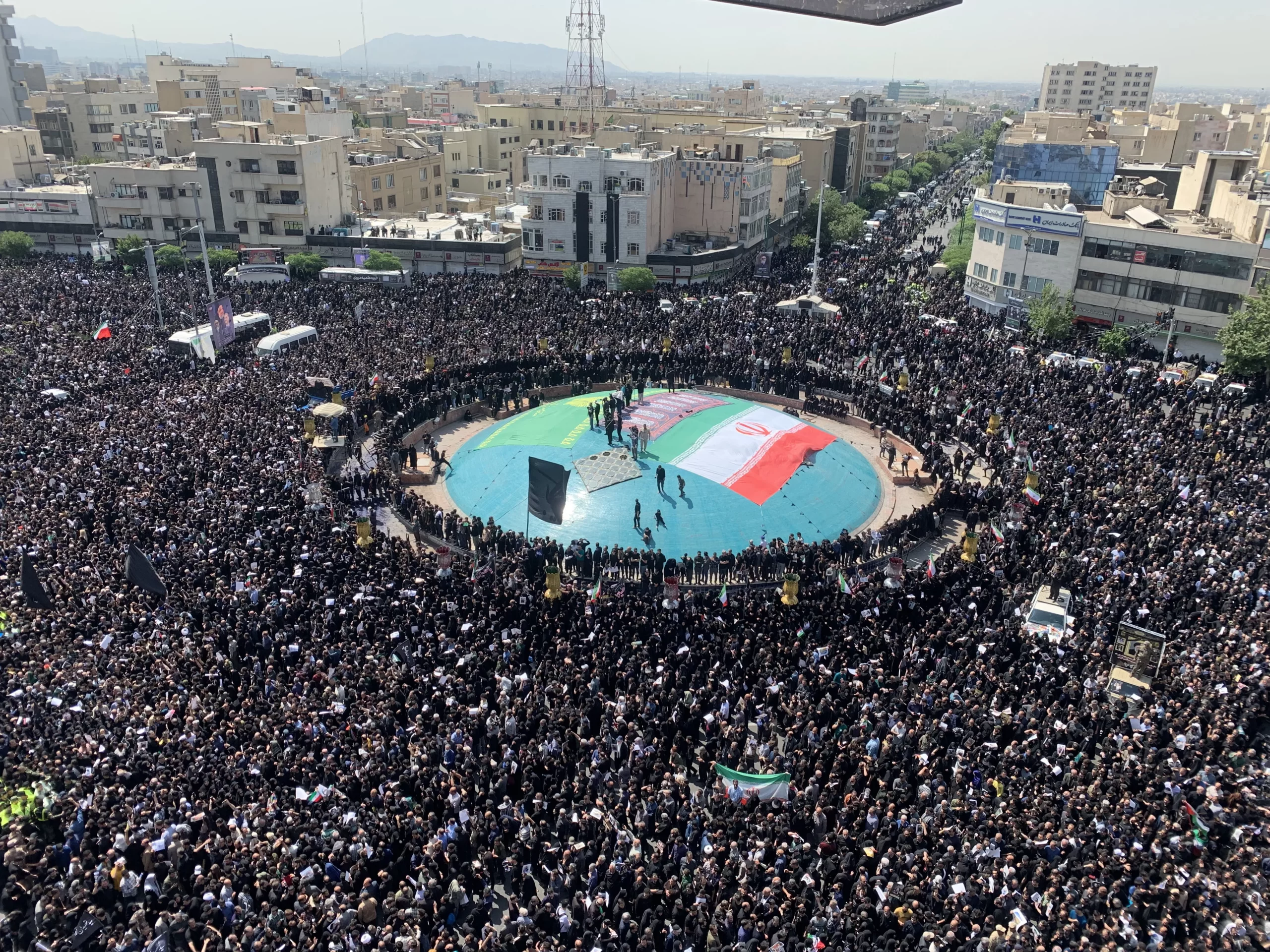
Iran’s supreme leader has presided over a funeral for the country’s late president, foreign minister and others killed in a helicopter crash on Sunday.
Ayatollah Ali Khamenei led prayers at Tehran University, where caskets carrying the dead were draped in Iranian flags.
President Ebrahim Raisi died alongside Foreign Minister Hossein Amir-Abdollahian and six others in a helicopter crash near the border with Azerbaijan.
Authorities had warned against demonstrations against the funeral procession and insults posted online.
“Oh Allah, we didn’t see anything but good from him,” Ayatollah Khamenei said in the standard prayer for the dead in Arabic.
Iran’s acting president, Mohammad Mokhber, stood nearby and openly wept during the service.
People then carried the coffins out on their shoulders, with chants of “Death to America” heard outside.
They loaded them onto a trailer for a procession through downtown Tehran to Azadi Square, where Raisi gave speeches in the past.
In attendance were top leaders of Iran’s paramilitary Revolutionary Guard, one of the country’s major power centres.
Also on hand was Ismail Haniyeh of Hamas, the militant group that Iran has armed and supported during the ongoing Israel-Hamas war.
Haniyeh is widely considered Hamas’s overall leader and has been a prominent member of the movement since 1980. The US Department of State designated him a terrorist in 2018.
“I come in the name of the Palestinian people, in the name of the resistance factions of Gaza…to express our condolences,” Haniyeh said.
He also described meeting Raisi in Tehran during Ramadan, the holy Muslim fasting month.
He said he heard the president say that “the Palestinian issue” remains the key one of the Muslim world, which “must fulfil their obligations to the Palestinians to liberate their land”.
He also claimed that Raisi called Hamas’ October 7 attack in Israel, which saw 1,200 people killed and 250 others taken hostage, an “earthquake in the heart of the Zionist entity”.

Also expected to attend services in Tehran were Pakistan’s Prime Minister Shehbaz Sharif and a delegation from the Taliban of Afghanistan, which included their Foreign Minister Amir Khan Mutaqqi.
Iran’s theocracy declared five days of mourning over Sunday’s crash, encouraging people to attend the public mourning sessions.
Typically, government employees and schoolchildren attend such events en masse, while others take part out of patriotism, curiosity or to witness historic events.
For Iran’s Shiite theocracy, mass demonstrations have been crucial to demonstrating the legitimacy of their leadership since millions thronged the streets of Tehran to welcome Grand Ayatollah Ruhollah Khomeini in 1979 during the Islamic Revolution, and also attended his funeral 10 years later.
An estimated one million turned out in 2020 for processions for the late Revolutionary Guard General Qasem Soleimani, who was killed in a US drone strike in Baghdad.

Across the capital, large banners were raised hailing Raisi as “the martyr of service”, while others bade “farewell to the servant of the disadvantaged”.
Some residents in Tehran received texts urging them to attend Wednesday’s ceremonies, the AFP news agency reported.
Footage carried by state TV showed streets filled with mourners, many of whom were carrying pictures of Raisi or the Iranian flag.
Funeral rites for the men began on Tuesday in the city of Tabriz and the Shiite clerical centre of Qom, where thousands of mourners attended ceremonies.
After Wednesday’s procession in the capital, Raisi’s remains will be moved to South Khorasan province, before being transferred to his home city of Mashhad in the northeast.
He will then be buried on Thursday evening in the city after funeral rites at the Imam Reza shrine.
Raisi, a hardline cleric, was a highly divisive figure in Iran. In the 1980s, he oversaw the execution of scores of opposition activists while working as a prosecutor.
He unleashed a brutal crackdown against demonstrators angered by the killing of 22-year-old Mahsa Amini in 2022. She died three days after she was detained by morality police in the capital for allegedly violating Iran’s strict rules requiring women to cover their hair with a hijab, or headscarf.
But his ultra-conservative outlook won favour with supporters of the regime, and Raisi was viewed as a possible successor to Ayatollah Khamenei.
© BBC News
Politics
Ireland to recognise Palestinian state
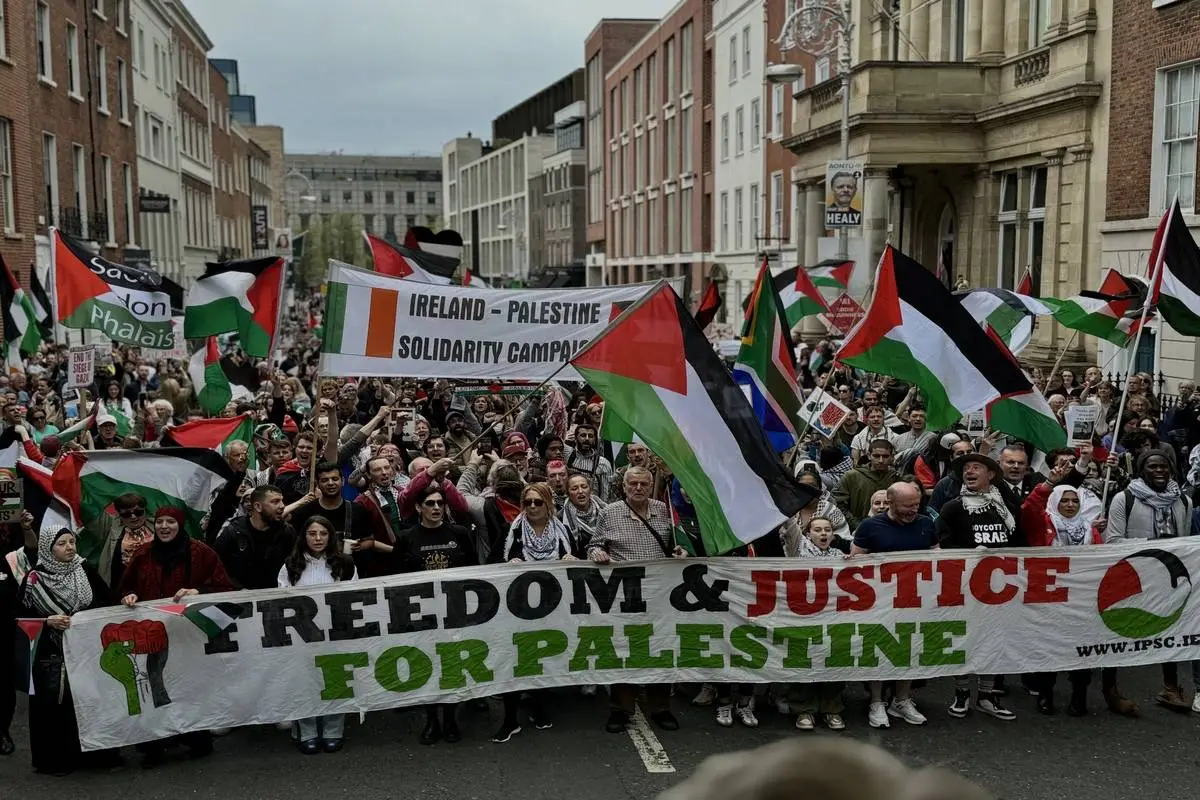
Ireland will recognise a Palestinian state, Prime Minister Simon Harris said on Wednesday, adding that he expected other countries to follow in the coming weeks after talking to world leaders.
“Today, Ireland, Norway, and Spain are announcing that we recognise the state of Palestine,” Harris said at a press conference.
“In the lead up to today’s announcement, I’ve spoken with a number of other leaders and counterparts and I’m confident that further countries will join us in taking this important step in the coming weeks,” he added.
He said a two-state solution was the only credible path to peace and security for Israel, Palestine and their peoples.
The recognition of statehood has particular resonance in Ireland given its history, Harris said.
“Taking our place on the world stage and being recognised by others as having the right to be there was a matter of the highest importance for the founders of our state,” he said.
He added that Ireland was unequivocal in fully recognising Israel and its right to exist “securely and in peace with its neighbours”, and he called for all hostages in Gaza to be immediately returned.
Ireland’s recognition of Palestine will be formally enacted on May 28, foreign minister Micheal Martin said on X.
© Reuters






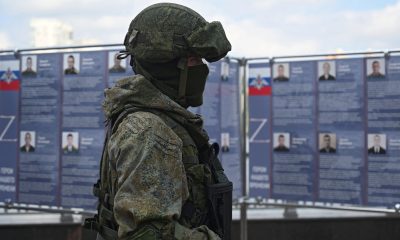

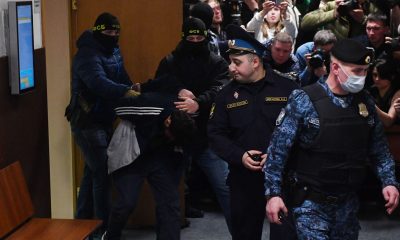

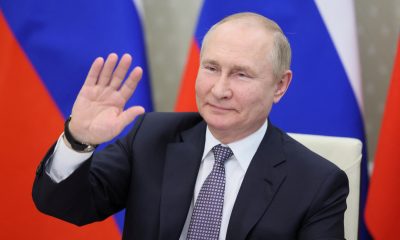








You must be logged in to post a comment Login